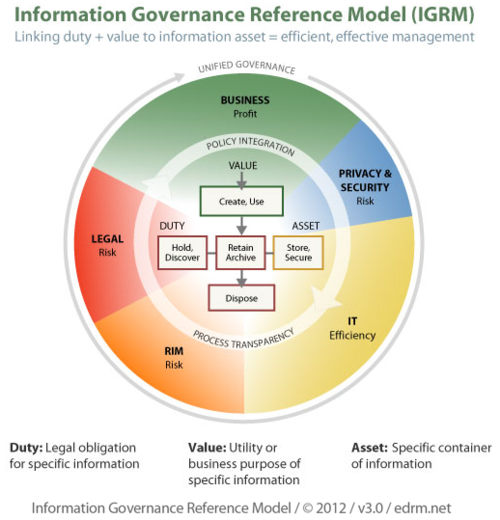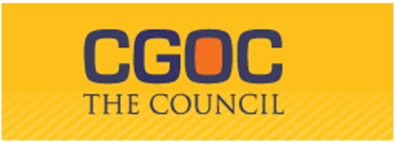EDRM Announces Version 3 of the IGRM for Information Governance – eDiscovery Trends

This week, the Electronic Discovery Reference Model (EDRM) Project, through its Information Governance Reference Model (IGRM) Project, announced today the release of version 3.0 of the IGRM. As their press release notes, “The updated model now includes privacy and security as primary functions and stakeholders in the effective governance of information. This release of the IGRM reflects broad industry support and collaboration across the expert communities of ARMA International and CGOC (Compliance, Governance and Oversight Council).”
The importance of information governance to the eDiscovery process is clear – when organizations do not have a clear plan for managing their information and defensibly disposing of expired information at the right time, costs for managing that information to respond to discovery requests soar. The IGRM Project’s mission is to “provide a common, practical framework enabling organizations to establish information governance programs that more effectively deal with the rising volume and diversity of information and the risks, costs, and complications this presents”. Information Governance is an organization-wide process, affecting Legal, Records, IT and Business organizations within the organization.
The IGRM project was started a mere two years ago, in 2010. Why does the IGRM exist? Their early survey of corporate practitioners, conducted jointly with the CGOC, makes it clear:
- 100% of respondents stated that defensible disposal was the primary purpose of information governance;
- 66% of IT and 50% of RIM (records management) respondents said their current responsibility model for information governance was ineffective; and
- 80% of respondents across Legal, IT, and RIM said they had little or very weak linkage between legal obligations for information/data and records management.
As the latest press release notes, “IGRM v3.0 now incorporates Privacy and Security as key stakeholders, reflecting the increasing importance of Privacy and Security duties and the efficiencies organizations can achieve when privacy and security efforts are more holistically integrated with other essential governance practices and programs.” The diagram above reflects the change – there is a new stakeholder group in blue within the diagram, representing Privacy & Security.
As for other details detailing the IGRM v3.0 update, a white paper is available on the EDRM site (with a link available to download a PDF of the white paper).
EDRM (via the IGRM project) and CGOC have been busy on the Information Governance front this year, as noted by these past stories on our blog here, here and here. Kudos to all involved in these efforts!
So, what do you think? Where does your organization stand with regard to information governance efforts? Please share any comments you might have or if you’d like to know more about a particular topic.
Disclaimer: The views represented herein are exclusively the views of the author, and do not necessarily represent the views held by CloudNine Discovery. eDiscoveryDaily is made available by CloudNine Discovery solely for educational purposes to provide general information about general eDiscovery principles and not to provide specific legal advice applicable to any particular circumstance. eDiscoveryDaily should not be used as a substitute for competent legal advice from a lawyer you have retained and who has agreed to represent you.






